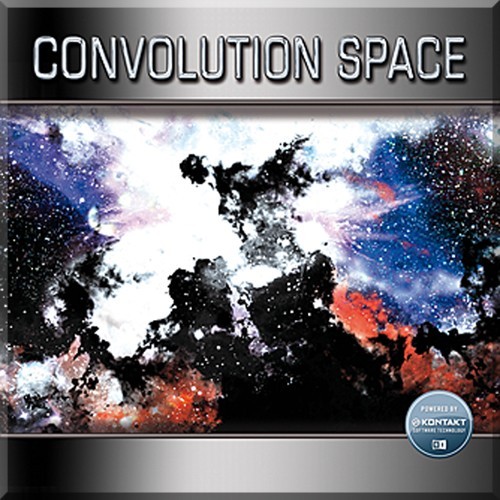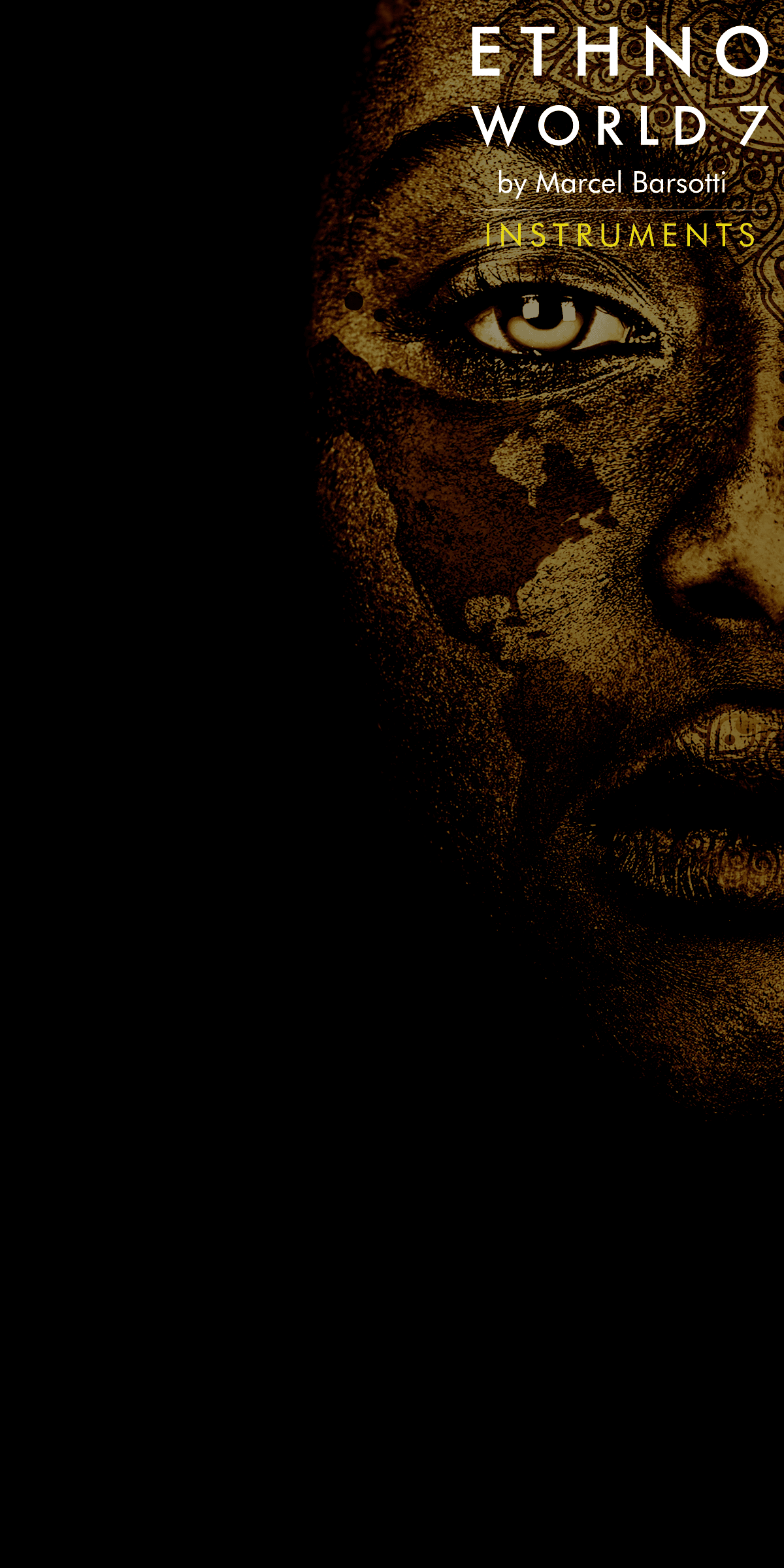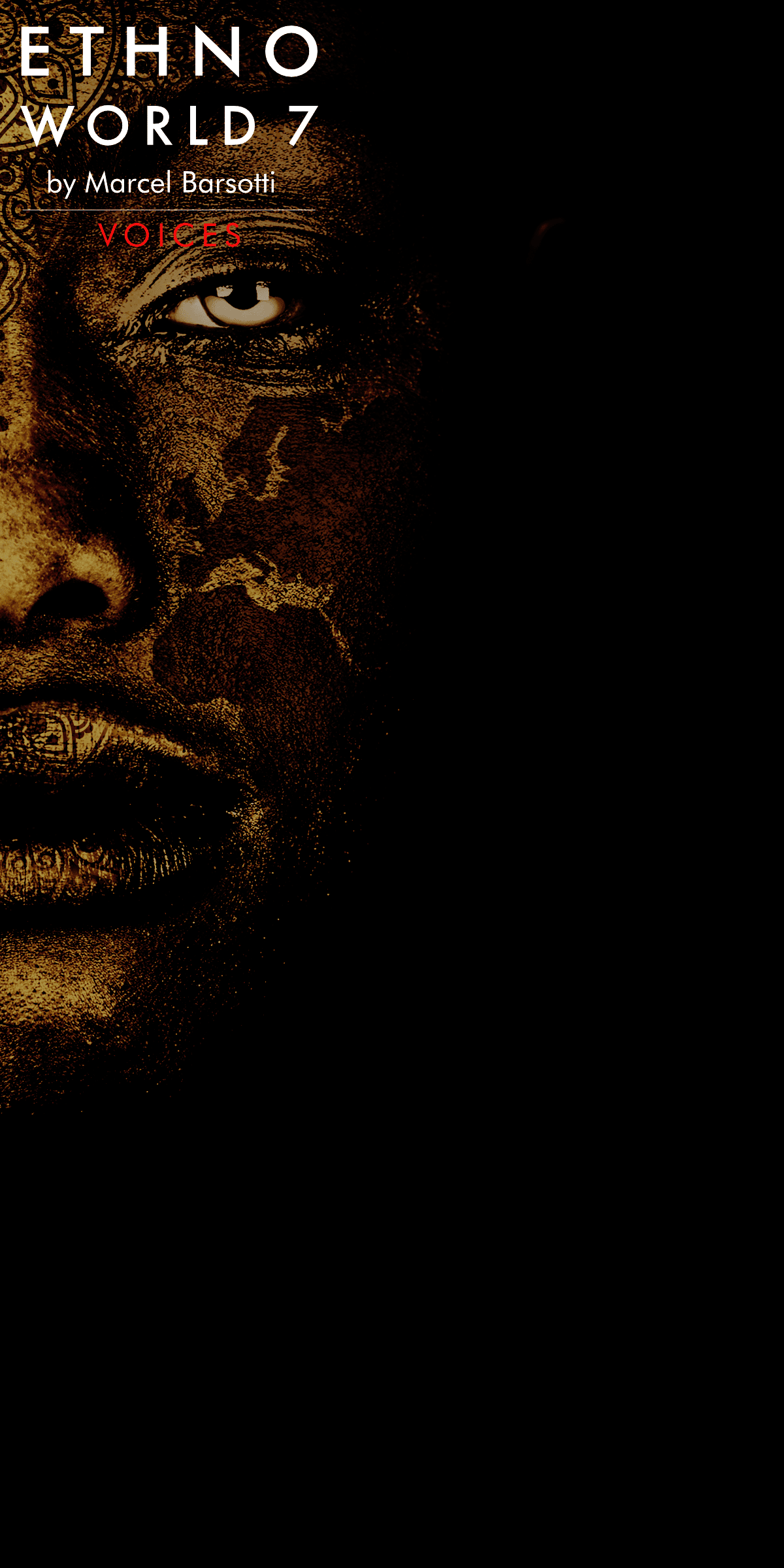
Ideal für Multimedia, Werbung, Film & Ambient Musik
Convolution Space ist das ideale virtuelle Instrument für Multimedia, Werbung, Film & Ambient Musik, für Klangweltenforscher & Soundabenteurer.
Dieses Texture- & Pad Plug-In auf Kontakt Player Basis, bietet 625 einzigartige Instrumente in Stereo und 5.1 Surround.
8.5 GB Soundmaterial laden ein zum direkten "Drauf-los-Spielen" und helfen neue kreative Klangwelten zu entdecken.
Die Technik dahinter ist aufwändig, die Anwendung hingegen ist denkbar einfach: Instrument auswählen, auf dem Keyboard spielen und am Modulationsrad drehen, um in neuartige Soundgefilde abzutauchen - der gespielte Klang transformiert förmlich in etwas völlig Neues! Natürlich stehen durch das ausgetüftelte Skripting auch die typischen Synthesizerfunktionen wie Hüllkurven, Filter, LFOs, Effekte, u.v.m. zur Verfügung, um eigene Klänge zu kreieren oder bestehende anzupassen.
Detaillierte Beschreibung in englischer Sprache:
"combine and explore these textures endlessly, through the wonders of Convolution Based Spectral Recombination!"
Für jede Stimmung die passende Kategorie:
- Abstract: Metaphysical and esoteric sounds that really fits no other description.
- Emotional: The beautiful, sad and ecstatic. Simply sounds that evoke emotion - mostly positive.
- Fantasy: Magical and otherworldly, these are sounds for your imagination.
- Mental: Sounds of the states of mind, ranging all the way from psychotic to the spiritual and psychedelic
- Scary: Sinister and malice, all for your horror soundtrack. This is not for the faint of heart.
- SciFi: For the future and all of it’s technology – and your high concept soundscape.
- Underground: dark and devoid of hope, these sound vibrate only downwards.
- Deep&Rumble: Earthshattering and relentless in the one pursue of deeper realms.
- Structures: The eerie and strange; these are places you normally avoid.
- Technology: The imaginary sounds of communicating CPU’s, searchlights and future machines
About the producer:
Magnus Lindberg, based in Stockholm, Sweden. Sound Designer for 15 years, with an obsession for the more esoteric sound designs; designing for games, films and retail, with clients as Microsoft, Nokia, MTV, Steinberg, Native Instruments and many, many more.
Achtung: Jede Audio Demo wurde mit nur einem Instrument (Preset) eingespielt!
... This material was clearly assembled with loving care and is the product of many long hours in the field obtaining samples and in the studio assembling the many instruments. The utilioty of the package may be narrowly focused, but it provides an amazing palette of astonishing sound possibilities. Within that narrow focus, it’s absolutely brilliant!
Most Kontakt Player 2-powered ROMpers don’t exactly go out of their way to be innovative, but Convolution Space has a few tricks up its sleeve thanks to its unusual use of Kontakt’s convolution reverb effect. The sounds are all of the atmospheric variety, with effects, soundscapes and a few pads being the order of the day. They’re intended to add texture or be used as backings, rather than be played like a conventional instrument. On the face of it, there’s nothing particularly cunning about the patches – indeed, each appears to be based on a single sample on C3, though we suppose that’s forgivable seeing as for the most part they’re not meant to be your typical chromatic, multisampled fare.
The interesting stuff happens when you flick up the mod wheel, which sets the balance between the dry signal and the wet, convolution-processed one. This can really bring the patches to life, and a number of both 5.1 and stereo convolution samples are available. The sounds are of a uniformly high quality and while Convolution Space may be expensive, it’s one of the best atmospheric ROMplers we’ve heard so far.
Rating: 8/10 Review: Convolution Space Computer Music – December 2008Most Kontakt Player 2-powered ROMpers don’t exactly go out of their way to be innovative, but Convolution Space has a few tricks up its sleeve thanks to its unusual use of Kontakt’s convolution reverb effect. The sounds are all of the atmospheric variety, with effects, soundscapes and a few pads being the order of the day. They’re intended to add texture or be used as backings, rather than be played like a conventional instrument. On the face of it, there’s nothing particularly cunning about the patches – indeed, each appears to be based on a single sample on C3, though we suppose that’s forgivable seeing as for the most part they’re not meant to be your typical chromatic, multisampled fare.
The interesting stuff happens when you flick up the mod wheel, which sets the balance between the dry signal and the wet, convolution-processed one. This can really bring the patches to life, and a number of both 5.1 and stereo convolution samples are available. The sounds are of a uniformly high quality and while Convolution Space may be expensive, it’s one of the best atmospheric ROMplers we’ve heard so far.
Rating: 8/10
Regular readers will know that I’m partial to convolution in all its aspects, and have even given seminars exploring some of its more creative possibilities. So when Best Service released Convolution Space (CS) I was keen to give it a test drive. This 8.5GB library comes on two DVDs, offers 625 instruments and, like various other libraries offering special features, uses NI’s Kontkat 2 Player.
In essence, CS offers a number of uniquely playable atmospheres, each of which is created from a single sample that you can transpose and play polyphonically over the keyboard range. There are then ‘convolved’ with an impulse-response sample, and the balance between the dry instrument and the wet, convolved version can be controlled in real time using the mod wheel.
CS offers separate folders containing stereo and 5.1 surround instruments, and the entire library is presented both with convolution effects alone, and with added Kontakt effects such as EQ, Delays and phasers, all neatly sorted into folders with names such as Abstract, Emotional, Fantasy, and Scary. CS also provides ‘High CPU’ and ‘Low CPU’ versions. The latter gives slightly lower audio quality when the single instrument sample is transposed away from its C3 root note, but I doubt that most users would notice the difference in the context of a project, and it certainly reduces processor overhead considerably.
The source material for both instrument and IR samples is extremely diverse, exploring synths, machinery, people, nature and city sounds, most of it post-processed through more hardware and software to create complex textures and soundscapes. As anyone who’s spent time using convolution will already know, it’s tricky to predict exactly how the two signals will interact when convolved, since the results will depend on how the spectral content of each varies over time.
So, although Magnus Lindberg has worked hard marrying source and IR samples in his instruments, there’s potential for plenty of other interesting combinations. You can choose your own IR for any preset using the drop-down menus: there are 38 short ones and 55 long ones for stereo instruments, and 35 for the 5.1 surround sounds, giving loads f variety (surround instruments can still be monitored on a stereo system, but you won’t benefit from the wraparound and motion effects).
Don’t expect to play melodies or chords with this library, because that’s not the point. The overwhelming feeling is of ‘abstract’ sonic landscapes, and although a few sound organic in origin and can be played as lush and uplifting pads, most have an unearthly feel that’s either strangely alien or dark and disturbing – whispering machinery, rumbling drones, stellar winds and tortured souls – with the mod wheel variously introducing mutant reverbs, ringing harmonics and distant drones, which, with the longer IRs, have a lingering life of their own.
Although it bypasses many convolution wonders such as pitch-shifted firework reverbs and drums that morph into piano chords (try Spirit Canyon Audio’s IR libraries for these), Convolution Space certainly lives up to its name. Its relatively high price reflects the amount of effort that goes into creating a large library, but for those who need galaxies of slowly evolving atmospheres, it’s a quick and easy-to-use introduction to an intriguing new world of convolution effects.
Rating: 4/5 Review: Convolution Space Sound on Sound – May 2009
Regular readers will know that I’m partial to convolution in all its aspects, and have even given seminars exploring some of its more creative possibilities. So when Best Service released Convolution Space (CS) I was keen to give it a test drive. This 8.5GB library comes on two DVDs, offers 625 instruments and, like various other libraries offering special features, uses NI’s Kontkat 2 Player.
In essence, CS offers a number of uniquely playable atmospheres, each of which is created from a single sample that you can transpose and play polyphonically over the keyboard range. There are then ‘convolved’ with an impulse-response sample, and the balance between the dry instrument and the wet, convolved version can be controlled in real time using the mod wheel.
CS offers separate folders containing stereo and 5.1 surround instruments, and the entire library is presented both with convolution effects alone, and with added Kontakt effects such as EQ, Delays and phasers, all neatly sorted into folders with names such as Abstract, Emotional, Fantasy, and Scary. CS also provides ‘High CPU’ and ‘Low CPU’ versions. The latter gives slightly lower audio quality when the single instrument sample is transposed away from its C3 root note, but I doubt that most users would notice the difference in the context of a project, and it certainly reduces processor overhead considerably.
The source material for both instrument and IR samples is extremely diverse, exploring synths, machinery, people, nature and city sounds, most of it post-processed through more hardware and software to create complex textures and soundscapes. As anyone who’s spent time using convolution will already know, it’s tricky to predict exactly how the two signals will interact when convolved, since the results will depend on how the spectral content of each varies over time.
So, although Magnus Lindberg has worked hard marrying source and IR samples in his instruments, there’s potential for plenty of other interesting combinations. You can choose your own IR for any preset using the drop-down menus: there are 38 short ones and 55 long ones for stereo instruments, and 35 for the 5.1 surround sounds, giving loads f variety (surround instruments can still be monitored on a stereo system, but you won’t benefit from the wraparound and motion effects).
Don’t expect to play melodies or chords with this library, because that’s not the point. The overwhelming feeling is of ‘abstract’ sonic landscapes, and although a few sound organic in origin and can be played as lush and uplifting pads, most have an unearthly feel that’s either strangely alien or dark and disturbing – whispering machinery, rumbling drones, stellar winds and tortured souls – with the mod wheel variously introducing mutant reverbs, ringing harmonics and distant drones, which, with the longer IRs, have a lingering life of their own.
Although it bypasses many convolution wonders such as pitch-shifted firework reverbs and drums that morph into piano chords (try Spirit Canyon Audio’s IR libraries for these), Convolution Space certainly lives up to its name. Its relatively high price reflects the amount of effort that goes into creating a large library, but for those who need galaxies of slowly evolving atmospheres, it’s a quick and easy-to-use introduction to an intriguing new world of convolution effects.
Rating: 4/5

Dieses Produkt erfordert den kostenlosen Native Instruments Kontakt Player, die neueste Version kann über Native Access, dem Download-Manager von Native Instruments, heruntergeladen werden!
Die erforderliche Kontakt Version für dieses Produkt entnehmen Sie bitte der Produktbeschreibung oder der Herstellerseite.
Systemanforderung:
Mac:
- macOS 10.14 oder höher
- 64 bit
- Intel Core i5 oder Apple M1 (native)
- RAM: 4GB (6GB empfohlen)
Windows:
- Windows 10 oder höher
- 64 bit
- Intel Core i5 oder ähnliche CPU
- RAM: 4GB (6GB empfohlen)
Supported Interfaces:
- Mac (64-bit): Stand-alone, VST, VST3, AU, AAX
- Windows (64-bit): Stand-alone, VST, VST3, AAX
Legacy Versions:
Wenn Sie eine ältere Version des Kontakt Players benötigen, lesen Sie bitte diesen Knowledge Base Article.
Erforderliche Registrierung:
Für die Nutzung von Best Service Produkten müssen Sie sich beim Hersteller unter www.bestservice.com registrieren, um Ihre Lizenz zu aktivieren.
Für Best Service Produkte, die den Kontakt Player nutzen, ist zusätzlich eine Registrierung bei www.native-instruments.com erforderlich.
Dieses Produkt benötigt eine Aktivierung!
Sie benötigen Native Access für die Installation, Registrierung, Aktivierung und Aktualisierung Ihrer Produkte. Starten Sie die Native Access-Software und melden Sie sich mit Ihren Native Instruments-Anmeldedaten an, um mit der Einrichtung zu beginnen.
Zur erfolgreichen Aktivierung benötigt Native Access eine funktionierende Internetverbindung.
Eine Offline Aktivierung auf einem andern Computer kann NICHT durchgeführt werden.





